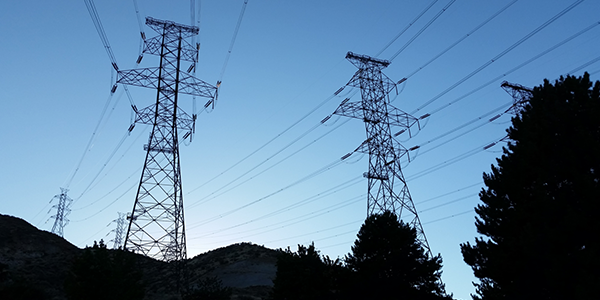CAISO’s Department of Market Monitoring found no evidence of market manipulation or strategic generator outages during the rolling blackouts of mid-August, the market watchdog said in a report filed Tuesday.
“DMM has carefully reviewed major outages which occurred on Aug. 14-15,” it said. “Based on its data analysis and conversations with plant operators, DMM has found no indication that outages were falsely declared at strategic times in order to allow generation owners to profit from higher prices.”
Some CAISO critics have called for an objective review of the blackouts and questioned why, for example, CAISO allowed large volumes of energy exports on days when it knew supply would be tight. The skeptics included the California Community Choice Association and a former president of the California Public Utilities Commission. (See CalCCA Seeks ‘Objective’ Review of Blackout Report and Former CPUC President Calls for CAISO Probe.)
Others speculated that CAISO’s decision to cease convergence bidding after the blackouts signaled that the financial hedges may have been used to game the market. (See Theories Abound over California Blackouts Cause.)
The DMM dismissed those notions as unfounded.
“DMM closely monitored and reviewed market behavior during the Aug. 14-15 heat wave,” it said. “Contrary to some suggestions in the media, DMM has found no evidence that market results on these days were the result of market manipulation.”
Whether the department’s report will satisfy the critics remains to be seen. In other areas, it largely agreed with the findings of a preliminary root-cause analysis by CAISO, the CPUC and the California Energy Commission. (See CAISO Says Constrained Tx Contributed to Blackouts.)
“Key findings in this report are consistent with findings in the joint CAISO/CPUC/CEC report, which found that there was no single root cause of the load-shedding events occurring on Aug. 14-15,” the department said.
An extreme Western heat wave that strained supply in California and the Southwest “resulted in demand for electricity well in excess of current resource planning targets,” it said. It recommended CAISO re-evaluate its planning targets and resource adequacy requirements prior to next summer.
Current counting rules for resource adequacy “overestimate the actual capacity that is available from many resources during the early evening hours, when solar production is very low and demand is still very high,” the department said. The blackouts occurred under such conditions.
“The most significant and actionable of these factors involve California’s resource adequacy program,” it said. “To limit the potential for similar conditions in future years, system level resource adequacy requirements should be modified to ensure more capacity is available during net load peak hours. In addition, capacity counting rules for different resource types should be modified to more accurately reflect the actual availability of these resources during the net load peak hours.”
The DMM agreed with the joint-agency root-cause analysis that “a prior market enhancement was unintentionally causing the CAISO’s [residual unit commitment] process to mask the load under-scheduling and convergence bidding supply effects, reinforcing the signal that more exports were supportable.”
And it found, as did CAISO, that transmission constraints because of weather in the Pacific Northwest limited imports, while the sudden loss of several gas plants in California forced the ISO to declare Stage 3 energy emergencies.
“Although the overall level of gas capacity on outage was not unusually high on these days, this sudden loss of a significant amount of gas capacity came at a time when the amount of excess supply was very low due to a combination of other factors,” the DMM said.
The department also agreed with the ISO that “self-scheduling of relatively large volumes of exports in the day-ahead market that were not backed by imports being wheeled through or contracts with capacity within CAISO” contributed to the outages.
“This increased the overall demand that had to be met in both the CAISO day-ahead and real-time markets because exports not supported by physical supply were passed from the residual unit commitment process into the real-time market at this time,” it said. “These export schedules were not subsequently curtailed in real-time during hours when the CAISO was curtailed.”


